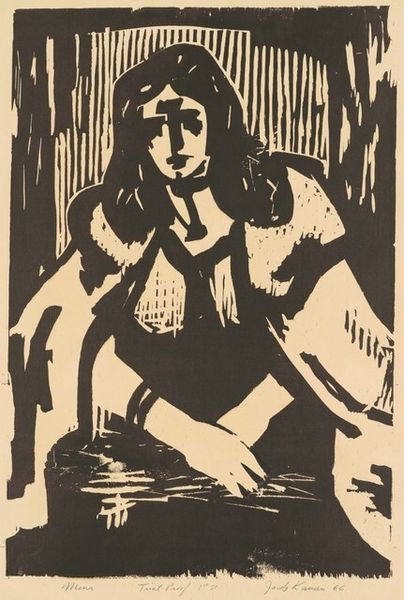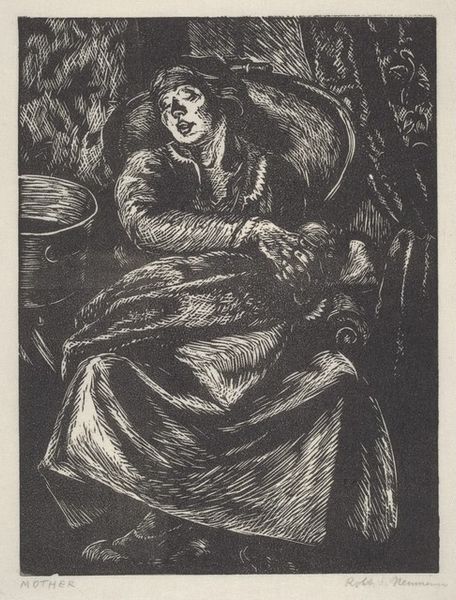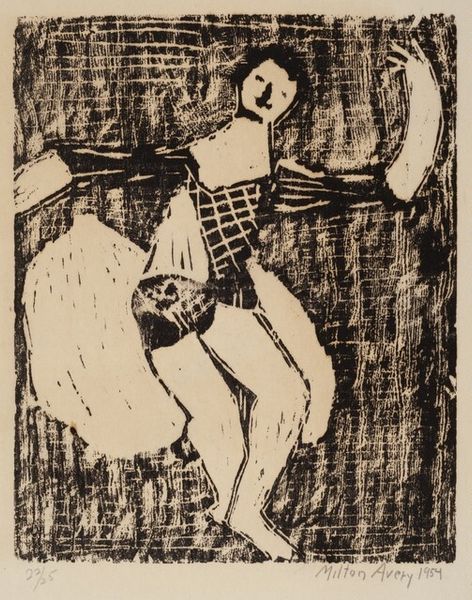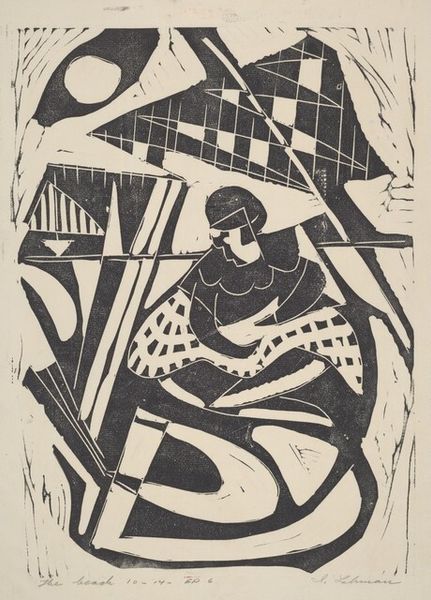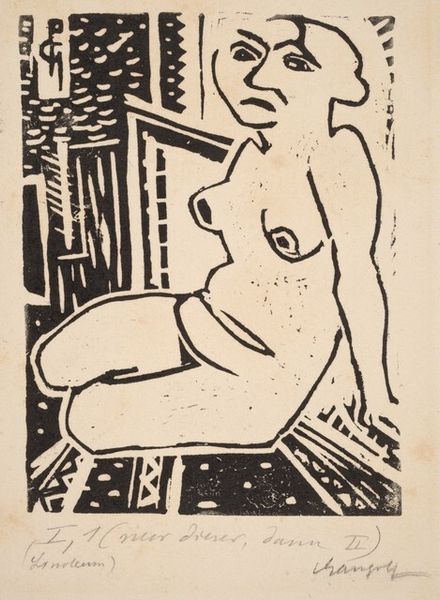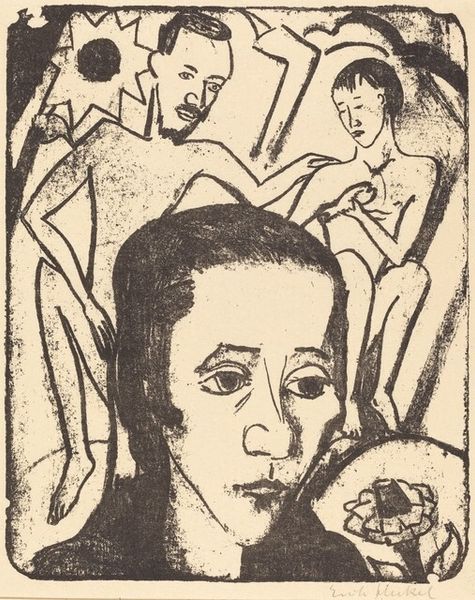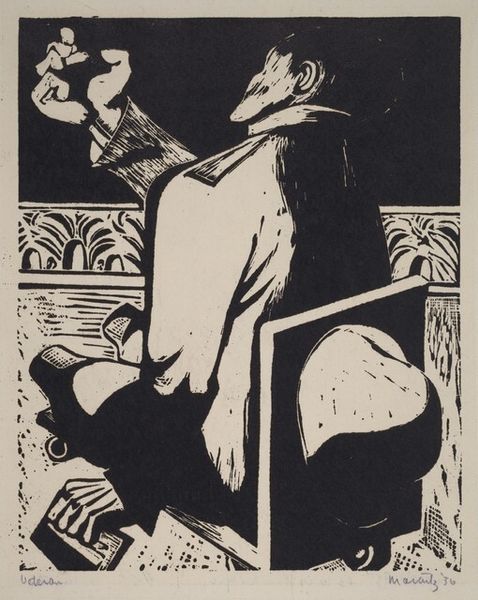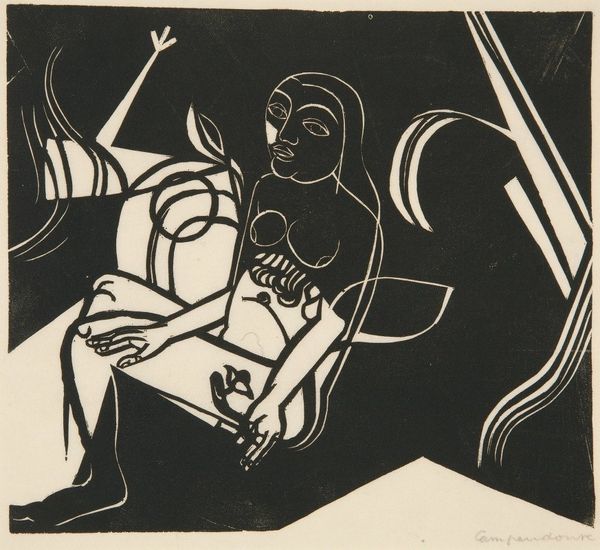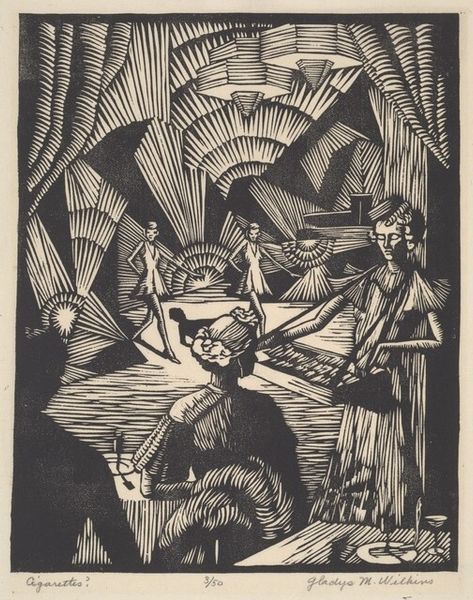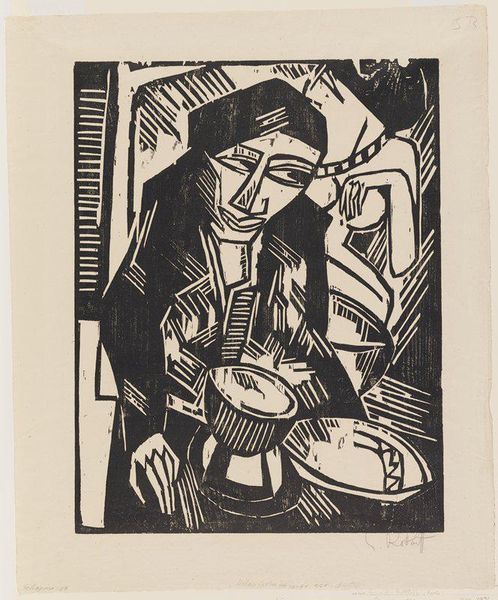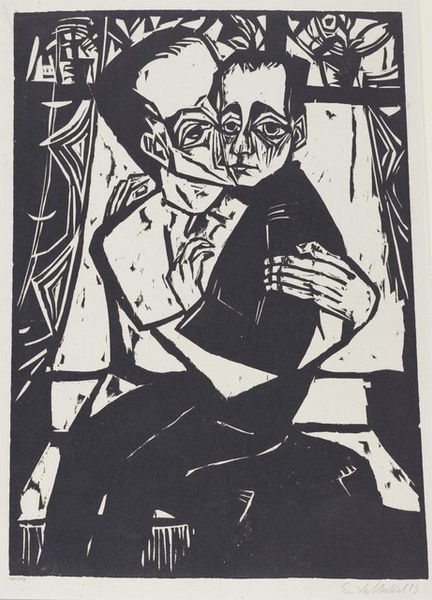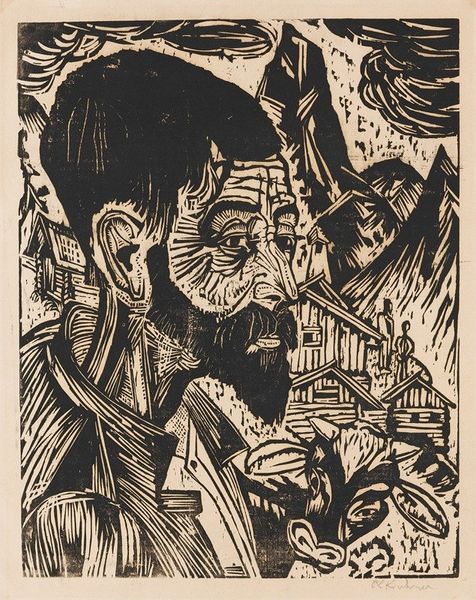
print, woodcut
# print
#
caricature
#
figuration
#
social-realism
#
geometric
#
woodcut
#
realism
Copyright: National Gallery of Art: CC0 1.0
Curator: Here we have Cliffa Corson's "Untitled (Figure, Wheel)," a woodcut print from around 1938. The stark contrasts immediately create a sense of urgency and drama. Editor: Yes, the deep blacks and whites give it a weighty presence, almost oppressive. Look at how the figure dominates the space, caught mid-motion with those enlarged hands. Curator: Corson was known for her engagement with social-realism. Thinking about this piece in that context, it seems a powerful comment on labor and the working class. Woodcut as a medium is itself tied to labor, think of the carving, the printing...it becomes inseparable from the artwork's content. Editor: Indeed. The raised fist and the wheel--possibly a cog in a larger machine--become powerful symbols. The fist is classic iconography for resistance, and the wheel here, while suggestive of progress, also hints at the dehumanizing effects of industrialization. Is the figure driving it or being crushed by it? Curator: That ambiguity is potent. It prompts us to question who benefits from such labor. How are the means of production truly serving the people? Woodcuts are so interesting because the grain becomes another visual texture, almost like it represents the grain of labour that created both the person, the product and the medium, wood, itself. Editor: I agree, there’s so much visual symbolism going on. The background hatching feels agitated and disturbed, and notice how the figure’s face seems simultaneously determined and weary. The artist is offering insight into a very important, very hard, human process. Curator: It feels inherently critical to the systems and class relations involved, that can be further analysed via understanding where Corson herself situated herself in that landscape and the artistic influences she bore during the Great Depression, as we delve deeper into the era’s cultural and material production. Editor: Absolutely, considering the context allows one to deepen our reflection on the symbols, providing further perspectives for a more personal and nuanced exploration of how humans perceive power in this work and maybe beyond.
Comments
No comments
Be the first to comment and join the conversation on the ultimate creative platform.
